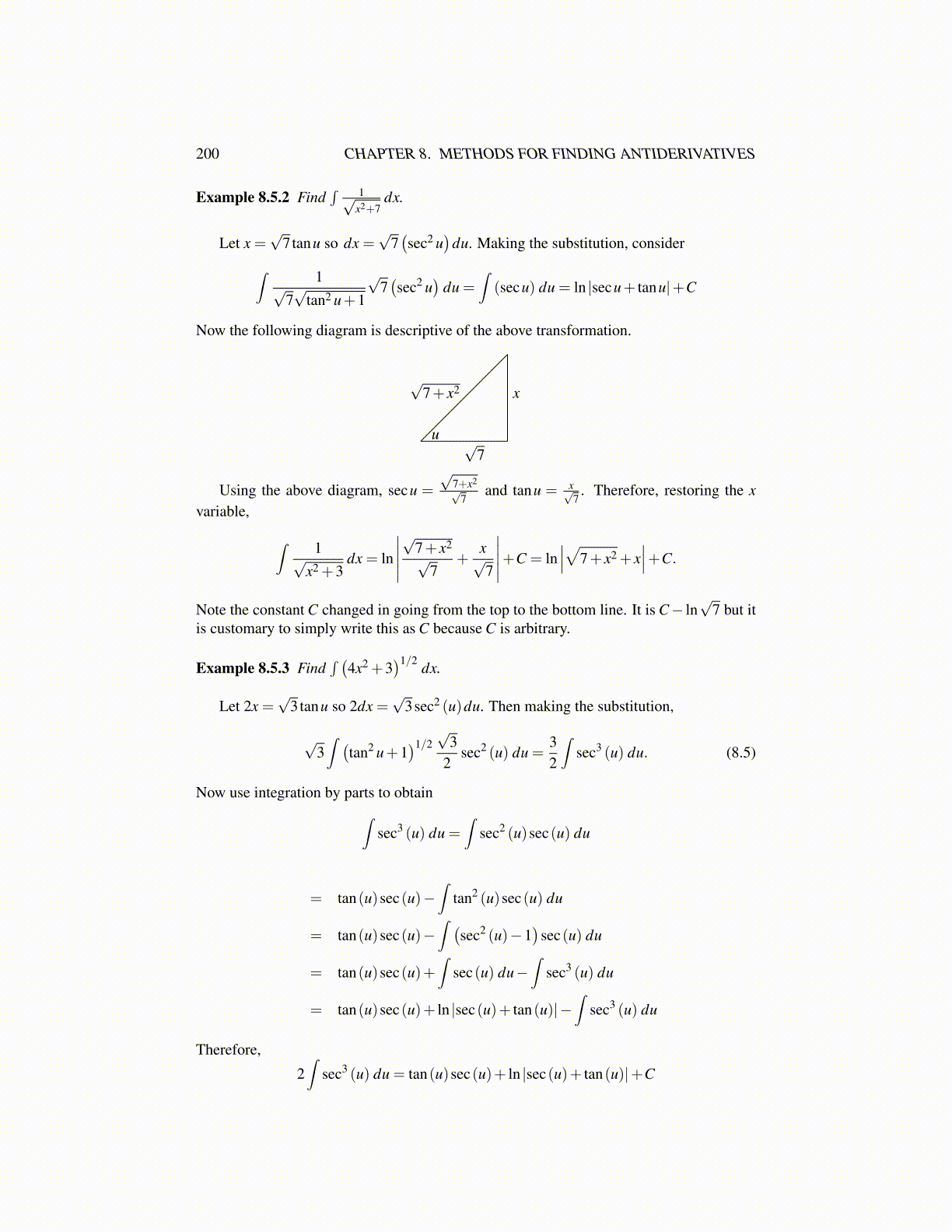
200 CHAPTER 8. METHODS FOR FINDING ANTIDERIVATIVES
Example 8.5.2 Find∫ 1√
x2+7dx.
Let x =√
7tanu so dx =√
7(sec2 u
)du. Making the substitution, consider∫ 1√
7√
tan2 u+1
√7(sec2 u
)du =
∫(secu) du = ln |secu+ tanu|+C
Now the following diagram is descriptive of the above transformation.
x
√7
√7+ x2
u
Using the above diagram, secu =
√7+x2√
7and tanu = x√
7. Therefore, restoring the x
variable,
∫ 1√x2 +3
dx = ln
∣∣∣∣∣√
7+ x2√
7+
x√7
∣∣∣∣∣+C = ln∣∣∣√7+ x2 + x
∣∣∣+C.
Note the constant C changed in going from the top to the bottom line. It is C− ln√
7 but itis customary to simply write this as C because C is arbitrary.
Example 8.5.3 Find∫ (
4x2 +3)1/2 dx.
Let 2x =√
3tanu so 2dx =√
3sec2 (u)du. Then making the substitution,
√3∫ (
tan2 u+1)1/2
√3
2sec2 (u) du =
32
∫sec3 (u) du. (8.5)
Now use integration by parts to obtain∫sec3 (u) du =
∫sec2 (u)sec(u) du
= tan(u)sec(u)−∫
tan2 (u)sec(u) du
= tan(u)sec(u)−∫ (
sec2 (u)−1)
sec(u) du
= tan(u)sec(u)+∫
sec(u) du−∫
sec3 (u) du
= tan(u)sec(u)+ ln |sec(u)+ tan(u)|−∫
sec3 (u) du
Therefore,
2∫
sec3 (u) du = tan(u)sec(u)+ ln |sec(u)+ tan(u)|+C